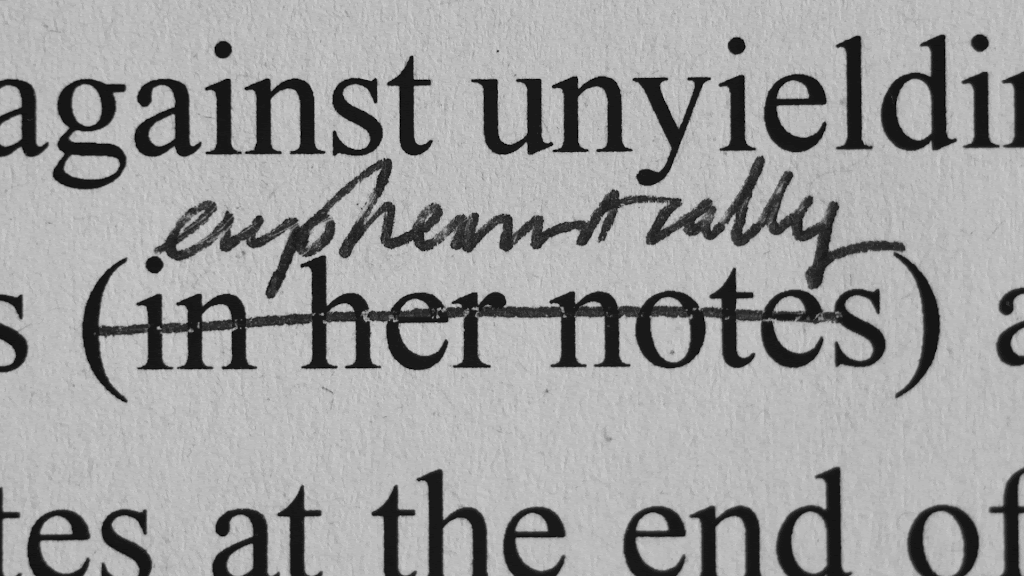Notes on Warm Decembers, a correspondence between Lucy Beech (LB) and Cassie Westwood (CW)
LB: Through two years of correspondence you and I adapted Eve Kosofsky Sedgwick’s eight chapter verse novel ‘The Warm Decembers’ (1978 – 1987) into a screenplay together (2022) which has evolved into this new multi-screen format for the Kunstverein (2024). In the end we decided that our film would be book-ended by a prologue and epilogue and through the process of making, you became the narrator of the film. The prologue is a direct reference to your essay: ‘The Use of a Poem in Transition’, which embraces instances of writers (and especially poets) incorporating earlier drafts, deleted passages, or false starts into a published work. In the epilogue you're reading from Sedgwick’s notes directly. So I wanted to ask first, what was most significant to you about Sedgwick publishing her notes and what did you find most exciting about her method of leaving the textual decisions and excisions on display? Did you find that a lot of the poets undertaking this work of poetic salvage tended to be queer?
CW: I did find that the writers incorporating their waste tended to be queer. There seems to be a really obvious reason for why queer writers might find some kind of meaning in forms that are unfinished, or poems and novels that advertise a certain difficulty in finding a satisfactory final shape. Putting waste on view is a means of advertising change and everything that change implies. There were of course also people talking about waste long before the contemporary moment. Take for example the English essayist Charles Lamb talking in the 1820s about his visit to Cambridge where the manuscript for John Milton's poem, ‘Lycidas’, is stored. He writes about how shocked and horrified he was to see annotations and deletions and remnants of the drafting process on view. He says it's almost unthinkable to imagine that the poem might have been any other way. The question of what we do with our waste became important in the early nineteenth century, with the increasing availability of printed matter. Paper and printing becomes much cheaper and books are produced and designed to be consumed and then passed on. Although you had circulating libraries, I think there would have been an increasing sense of books themselves being no longer quite as rare and precious, but actually a kind of potentially disposable item. There's a whole genre of the fragment poem and a Romantic interest in ruins as well. I think they're connected to the subject.
LB: Maybe because the Romantic fragment poem gestures towards the whole, which is what Sedgwick is trying to escape by putting her waste on view and foregrounding the process of making. It's like she aims to destabilise any potential of wholeness or completeness - I remember this is what drew us to work on the poem in the first place: the poem's performance of searching for coherency. Its rhythm feels like writing being picked up and put down during the creative process as the author struggles to be with the poem or finish the work due to illness. I was inspired by the way in which the form of the work embodies the loss involved in the creative process. Do you remember we talked alot about exploring this instability, and ways of referencing the conditions of making within the tableau of the film itself? It's like the multi-screen has freed us up to use b-roll material and make use of ideas and tests from the production process of the single channel edit. I wanted language to be just one element of that composition, so that the viewing experience can also be about letting these elements come and go, like feelings, rather than trying to grasp some coherent sense of a whole.
Read Full text here
Detritus, Kunstverein Harburger Bahnhof
The show’s centerpiece is a new multi-channel video installation that oscillates between a play, a reading, a cinematic narrative, and a process of creative waste management. At times visual material occupies all channels super widescreen, at others b-roll and filmic scraps are collaged on separate screens. Evoking the messy and unrestricted aspects of creative composition this expanded cinematic experience developed out Beech’s interest in ‘wasteways’ or the role humans play in generating, ignoring, coping with or analyzing waste in its various manifestations.
The film’s underlying narrative depicts a coming of age story that revolves around teenage protagonist Beatrix, who moves through delayed grief and quasi-sensory experiences of her deceased father. As Beatrix works to build a sense of self in the absence of her parents her thoughts and dreams meander through landscapes and sewers following the path taken by evacuated bodily waste. Her childhood memories are conflated with scenes from agricultural farms and scientific laboratories, where scientists monitor microbial diversity in sludge. Questions of flow and blockage in the film pertain not only to individual guts and urban drainage networks, but to understandings of creativity and an embodied experience of grief.
*




